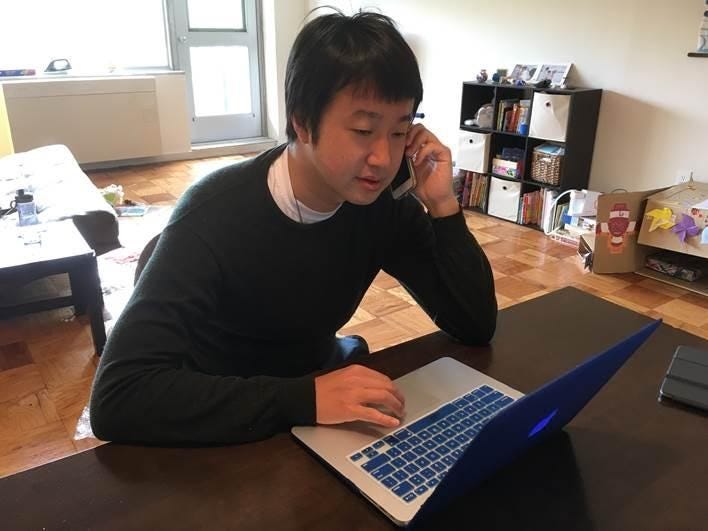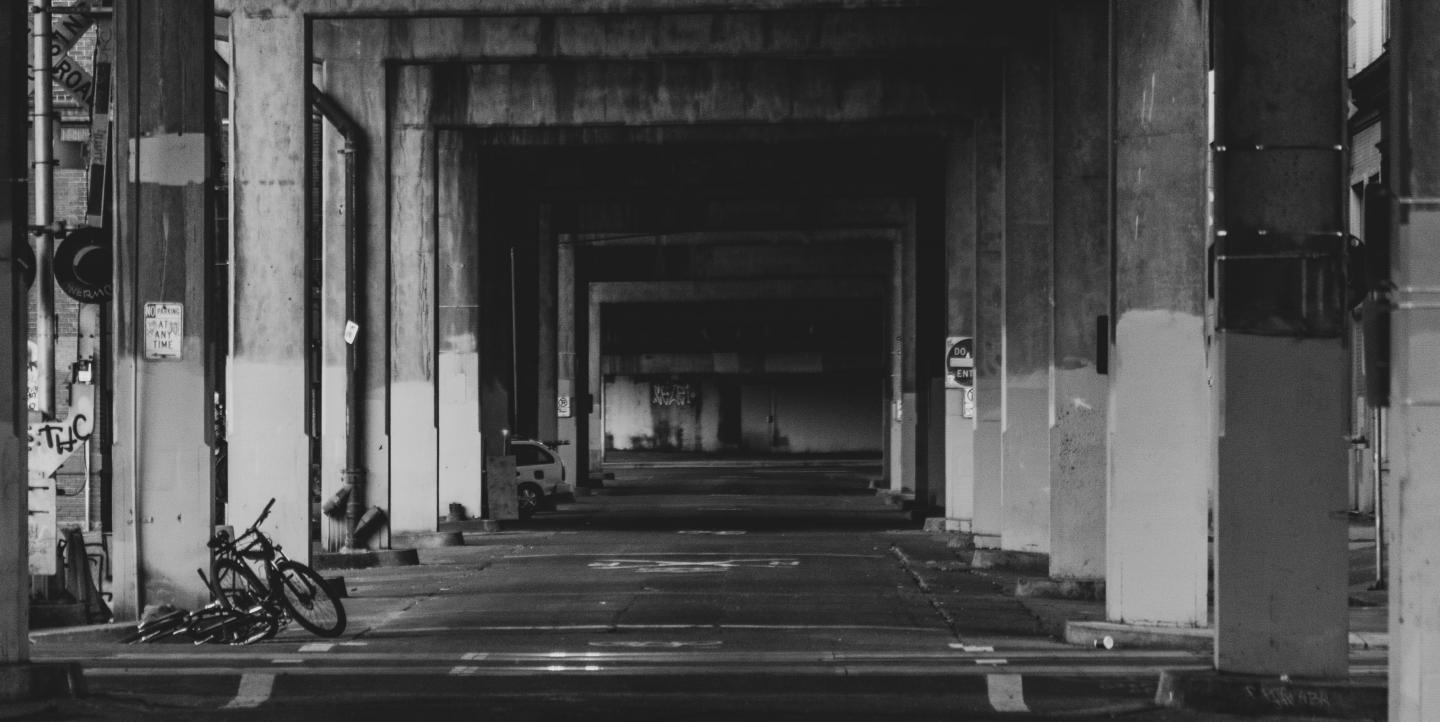Kathy Best knows that the most impactful investigative journalism is a result of collaboration.
Best is the director of the Howard Center for Investigative Journalism at the University of Maryland, outside Washington, DC, and in less than two years in her role she has already been able to lead award-winning collaborative projects.
In fact, the center’s first project — a climate change collaboration between NPR and Maryland’s student-powered Capital News Service — won the first-ever collaborative journalism award from the Society for Professional Journalists.
But perhaps the most exciting prospect of heading up the Howard Center was collaborating with other universities on ambitious nationwide investigations. “You can build on the strengths of each journalism school and the students get to work with people they wouldn’t even get to meet otherwise,” Best said.
With an army of students eager to learn, and Pulitzer-winning journalists shepherding them as instructors, Best knew it was possible to produce groundbreaking stories while teaching the next generation of reporters how to work together.
The result has been a collaborative effort involving seven universities, 19 faculty members, and more than 270 students — from Oregon to Arkansas — that produced nearly 40 stories on how people are experiencing homelessness across the United States, a project called Nowhere to Go.
Setting up a nationwide university collaboration
After Best started as the center’s director in April 2019, she spoke with Deborah Nelson, an investigative reporting professor at Maryland. Nelson helped to write the original grant proposal for the center and made sure that collaboration was going to be a major focus of their work together.
Nelson also gave Best a list of about 20 instructors at investigative journalism programs around the country who had expressed interest in collaborative projects — and Best began calling and emailing to see who wanted to play.
Three instructors immediately jumped at the opportunity: Maggie Mulvihill at Boston University, Rob Wells at the University of Arkansas, and Brent Walth at the University of Oregon.
That summer, Best and Nelson also ran into Walth at the Investigative Reporters and Editors (IRE) conference in Houston. Walth told them he was interested in covering homelessness from a solutions journalism perspective, and they decided to run with it for the collaborative project.
As the story focus and core project members became clear, three more partners joined: Moni Basu at the University of Florida, Christina Leonard at Arizona State University, and Cheryl Phillips at Stanford University.
Many of the journalism instructors, like Mulvihill, already had investigative classes set up to enlist their students in this work. Others, like Walth, planned to advise students in independent research programs or work with student-led publications. By the late summer, a massive team of instructors and students was starting to take shape.
[Read more: Journalists offer tips for collaborating on data journalism projects]
Diving into data
As students began arriving on campus in fall 2019, their instructors had them hit the ground running. The first step was data collection.
Sean Mussenden, the data editor at the Howard Center, was leading his data journalism class in perhaps the most foundational aspect of investigative reporting — requesting public records. Because this involved making legal requests, Mussenden also brought in Maryland’s two media law classes.
As a result, there were about 80 Maryland students requesting information from police agencies nationwide, in addition to the students trying to find similar data at Boston, Oregon, Stanford, and elsewhere.

Boston University graduate student Ryoma Komiyama reporting from his desk on the homelessness project. Photo: Kamome Komiyama
One of those Maryland students was Luciana Perez-Uribe, a second-year journalism graduate student. Perez-Uribe found it especially helpful to see what other students were finding in their cities, both to trade insights and to widen the scope of the collaborative project.
“Sharing data is huge,” Perez-Uribe said. “Anytime you’re able to file a records request, get data, and share it with other teams, it expands the whole story because you’re able to get national data instead of just a single state or county.”
The students were looking to gather a few main data points about homelessness in different cities, such as 311 records of resident complaints and police calls for service. However, it is notoriously difficult to obtain public records from police agencies, even when the law is on journalists’ side. Mussenden said it was common for the students to be ignored or have officials put up all kinds of roadblocks.
Persistence and learning from each other was key. “I would often hear one student saying, ‘Yeah, I called and emailed this person and didn’t hear back,’” Mussenden said. “And another student would say, ‘Well, I called and emailed every day for five days until they responded to me.’ And the other student would try that and it would work.”
Arranging the reporting
The data the students gained throughout the fall and winter shaped their coverage. In February 2020, Nick McCool, then a fourth-year undergraduate student at Boston University, got wind of a statistic that helped his reporting rise to the top of the project.
With the assistance of Mulvihill, his instructor, McCool had been trying to get homeless arrest data from the Boston Police Department. He discovered that in 2019, people experiencing homelessness accounted for about 13% of Boston’s total arrests.
As the students reported, their instructors would discuss what they were finding on a weekly call. Over time, two clear story topics emerged: criminalization and encampments.
But with so many different students and faculty involved, Best and Nelson knew it would be difficult to make everything fit together. So, they advised the instructors to pursue the local stories that made sense for their students — and they would figure out which information to pull for two national stories later.
For the most part, this approach worked well, as each of the instructors and schools had different styles and interests. While Oregon focused on solutions in their reporting, for example, Maryland did a deeper dive into the problems and causes.
But when it came time to build the national stories, Walth said they lacked cohesive focus. His students ended up dedicating time to add in national statistics and provide a broader framing for the lead criminalization story, only to see their work cut in the final rounds of editing — a frustrating yet important lesson of large collaborative journalism projects.
“That’s journalism. You have to roll with it, you have to adjust, you have to get back up and keep going,” Walth said. “It was an authentic, real journalism experience.”
With the benefit of hindsight, Walth said it might have also been helpful to directly coordinate on a national perspective from the beginning. But Walth knew Best and trusted her editorial judgment — they were regional competitors and Pulitzer winners in the 2000s at The Oregonian and The Seattle Times, respectively — and overall, Walth was amazed at how well the ambitious collaboration turned out.
“I think that’s why it’s really important that the professors or editors trust each other and know each other,” Best said. “Because there are going to be difficult conversations. And those conversations are easier if you aren’t dealing with strangers and you are coming from a place of mutual trust.”
That shared history and respect made the project shine. Nelson was also a Pulitzer-winning journalist with The Seattle Times in the 1990s, and she already knew many of the partners through her investigative reporting and teaching.
“This is the gold standard, these are Pulitzer-winning journalists,” Mulvihill said. “[Best and Nelson] are phenomenal editors, and they knew what was compelling and how to arrange the reporting.”
In the end, many of the students were able to publish work in local and regional publications, like The Register-Guard (the daily paper in Eugene, Oregon) and The Boston Globe. The lead criminalization story was also distributed nationally by AP and published online by The Washington Post and The New York Times.
[Read more: Tips for project managers with remote teams]
Pivoting on the fly
Even more impressively, the group finalized these stories as the coronavirus disrupted daily life. While they had wanted to examine affordable housing next, they instead pivoted to the increasing threat of evictions, hoping to determine whether the federal eviction moratorium during the pandemic was actually working for Americans.
Five of the original seven universities joined the summer evictions project: Maryland, Arkansas, Stanford, Oregon, and Boston. Without classes in session, Best was able to hire the Maryland students as paid interns, while for the students at other schools she was able to secure a Pulitzer Center grant to pay them stipends.
In the summer, both the students and instructors had more time to dedicate to the project. They didn’t have the same constraints; there were no other classes, homework, or papers to grade. As a result, the students were able to get more face time with each other and the instructors, and there were daily Zoom meetings with everyone to talk about issues that came up in reporting. “They were problem-solving together, sharing techniques, and it was a joy to watch,” Best said.
The group also moved deeper into data analysis, setting up web scrapers to more easily collect eviction records from online court management systems. In fact, Mussenden and his students are still collaborating with multiple partners — like Stanford’s data collaborative, Big Local News, and USA Today — to fully automate this process in as many cities as possible.
The ultimate goal is to release these scrapers publicly, so it’s easier for journalists and researchers to use eviction records to tell stories. “If data and information were more public and shared, it would make stories a whole lot better,” Perez-Uribe said. “You can get a full picture instead of a very narrow view. It should be the future of journalism.”
Learning how to collaborate
Because of altered school schedules and other projects spurred by the pandemic, the university collaboration was put on pause at the end of the summer. But the Maryland students and instructors are still collaborating with each other on data analysis and reporting.
In fact, Perez-Uribe has taken a liking to project management, and Best handed many of the coordination responsibilities to her. Perez-Uribe’s interest was sparked by an entrepreneurial journalism class she took at Maryland, where she worked to make the investigative teams at the Howard Center more efficient.
“Journalists are so deadline-oriented and everybody is usually focused on their story,” Perez-Uribe said. “I think getting people together to talk about what they’re finding is key. And it’s not that hard, but it does need to be thought about.”
Perez-Uribe is just one example of a new generation of journalism students who are learning how to collaborate, communicate, and maximize each other’s talents.
“That’s a big part of what we’re trying to do in building these teams with different skill sets,” Mussenden said. “We want to help them understand how the other part of the team works and what each side needs from each other and how to speak the same language.”
For Best, it will always be important to teach classic investigative journalism skills, like data collection and reporting. But with fewer resources in shrinking newsrooms, Best believes that teaching journalism students how to collaborate with each other may be even more valuable.
“You have to learn to take advantage of the skills of everyone in the room,” Best said. “I think that they saw the advantage of that. They saw that by working together, by sharing what they were learning, it made them better, it helped their skills improve.”
This story was originally published on the Center for Cooperative Media’s Medium page and is republished here with permission.
Main image CC-licensed by Unsplash via Sean Benesh.

